Innovative hydrogel
The immune cell influencer
Biophysicist Katharina Hast is developing a hydrogel at Empa in St. Gallen that makes the body's own phagocytes fit for treating cancer or chronic wounds. The Uniscientia Foundation in Vaduz is funding the project, which was recently launched.
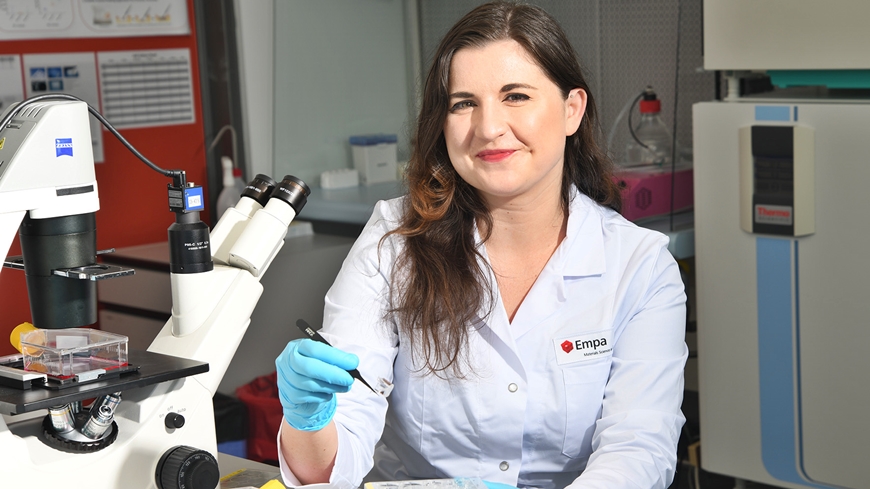
Humans have about 1000 billion immune cells. Some of them patrol the blood and are summoned by messenger substances to wherever there is a fire. Masses of immune cells, for example, act as specialized scavenger cells, so-called macrophages, and go wherever infectious agents invade or foreign objects interfere. Tumors, however, have the ability to evade macrophage attacks: They send out signals that literally rob the phagocytes of their appetite.
While macrophages need to be "awakened" to fight tumors, they are too active in other disease processes, such as chronic wounds. Empa researchers from the Particles-Biology Interactions, Biointerfaces and Biomimetic Membranes and Textiles labs in St. Gallen are therefore joining forces to sensitize the macrophages to match the disease process in the body.
For this purpose, active substances are to be embedded in a hydrogel, a scaffold made of a biodegradable polymer, which attract macrophages and "reprogram" them appropriately. Biophysicist Katharina Hast recently started her doctoral thesis within the project. The Empa researcher is convinced that the strategy of introducing nanoparticle active substances via a smart material has several advantages: "The hydrogel should be able to influence macrophages precisely and efficiently. This should also make it possible to reduce the side effects of treatments, she says.
Promoting talent
Empa's Zukunftsfonds is looking for private donors for exceptionally talented young researchers and for outstanding research projects that are not (yet) supported elsewhere. The Vaduz-based Uniscientia Foundation is funding the present project.
Katharina Hast
Particles-Biology Interactions / Biointerfaces
Phone +41 58 765 7075
Dr. Martin Gubser
Empa Zukunftsfonds
Phone +41 58 765 4335
martin.gubser@empa.ch
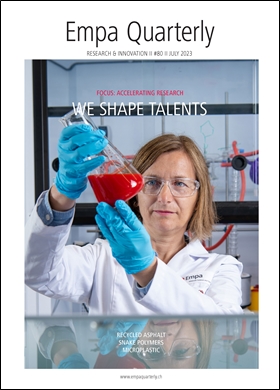
Empa Quarterly#80 Accelerating research
The young people of today are the decision-makers of tomorrow. In this issue, the focus is therefore not (only) on materials and technologies, but also on the people who make them possible: Researchers, founders, apprentices and students. Through support at all professional and academic levels, these talents can reach new heights in science or enter the Swiss economy as urgently needed skilled workers.
Read the latest EmpaQuarterly online or download the pdf-version.
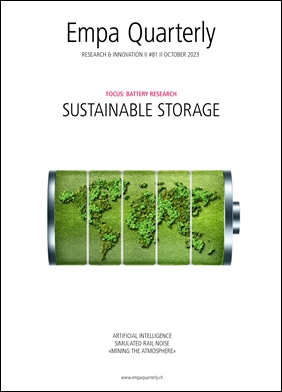
Empa Quarterly#81 Battery research
Being able to store energy is a central pillar of a sustainable energy system, since solar and wind energy are not always available in sufficient quantities when they are needed. Good batteries are indispensable for the energy transition, and thus for a more sustainable world. Empa researchers are developing batteries for different applications, from stationary energy storage to electromobility. They are also working on analyzing and recycling end-of-life batteries.
Read the latest EmpaQuarterly online or download the pdf-version.
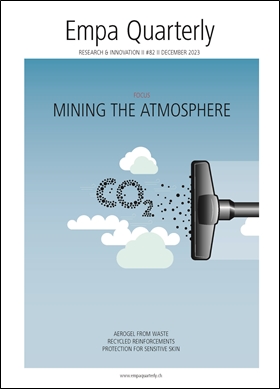
Empa Quarterly#82 Mining the Atmosphere
To limit climate change, we need to compensate not only for future emissions, but also for historical ones. One solution would be the "atmospheric vacuum cleaner": we remove the excess CO2 from the atmosphere. But what do we do with it? Instead of extracting the carbon for polymers, medicines, fibers, fuels and the like from crude oil, we use atmospheric CO2. This is the simple – yet extremely challenging in technical terms – idea behind Empa's new research initiative, Mining the Atmosphere.
Read the EmpaQuarterly online or download the pdf-version.
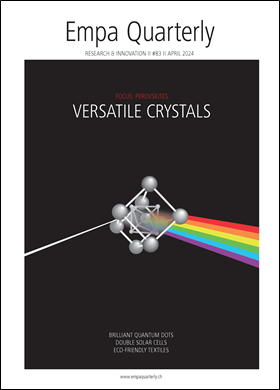
Empa Quarterly#83 Perovskites: Versatile cristals
Over 180 years ago, a curious crystal was discovered in the Ural Mountains. Today, it has given rise to an entire class of materials that is of great interest to researchers: perovskites. What all perovskites have in common is their crystal structure, which gives them unusual properties. By changing the exact composition of the perovskite, scientists can control these properties. Empa researchers are using this promising material to develop solar cells, detectors and quantum dots.
Read the EmpaQuarterly online or download the pdf-version.
-
Share






